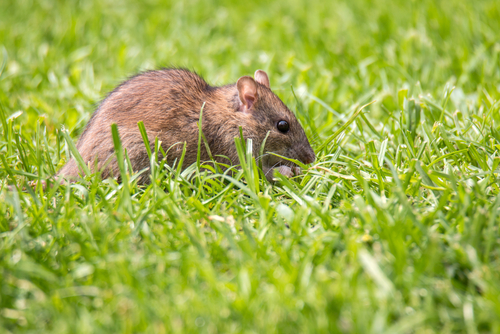Rats in the California Home Garden: Misconceptions about Rats (Part 2 of 6)

Rats in the California Home Garden
Part 2: Misconceptions about Rats
I know there aren’t any rats in my house, on my property, or at my neighbors’ properties so it couldn’t be rats eating the fruits on my fruit trees or the vegetables in my garden. Roof rats may forage for food at distances of up to 300 feet from their nests, and may travel further if they are hungry or have been expelled from a nest such as by humans clearing an infestation or by the rats themselves as a result of nest overpopulation. Norway rats typically keep to a smaller range, but may still routinely travel 50 feet or more looking for food. Both species often live on one property and forage or eat at other properties.
It can’t be rats because my trash is secure, and I have no old or waste food accessible to rodents. If hungry enough or other food sources are unavailable, rats will eat stale food, scraps in trash and compost piles, and rotting fruit, but given the option they prefer fresh food such as bird seed, pet food, and ripe or almost-ripe fruits and vegetables. In my experience, roof rats in particular are more drawn to citrus, avocados, ripening stone fruits, other fruits, and when hungry enough, garden vegetables, more than to foods that are rotting, old, or stale.
I only saw a couple of rat droppings or a single rat so it isn’t a big deal. Because of the short period that it takes for rats to mature from birth to reproductive maturity, and when food is abundant, a small rat population or even a single breeding pair of rats can multiply rapidly to a large population. Both primary species of pest rats (See Rats in the California Home Garden Part 1: Norway Rats and Roof Rats) produce multiple litters per year. It can be difficult to distinguish between squirrel droppings and rat dropping. See Part 4 of this series (Coming Soon!): “Was the Damage Caused by Squirrels or Rats?” As the young of a first few litters reach reproductive maturity, and their young do the same, population explosions of rats can occur over a period of a few to several months. Rats communicate with pheromones and mark trails to safe areas with urine. When one or two rats find a new home or habitat, they may attract other rats.
Cats provide an effective means of control for rats. Cats may provide some deterrent, and the occasional cat does prove an effective or enthusiastic ratter, but adult rats are often too large to be easily managed by cats, and many cats leave them alone. Rat populations may increase too rapidly for cats to provide effective control. Roof rats may find ample habitat and food, and thrive at a given property or structure while spending little or no time in areas accessible to cats.
There’s nothing I can do until I see signs of rat infestation. Prevention is by far the most efficient means for dealing with rats. Use rodent-secure compost bins and waste bins. Build homemade cages for compost piles out of wire mesh or hardware cloth. Remove outdoor food sources such as fallen fruits and nuts. Inspect the perimeter of homes and garden sheds regularly, and seal cracks and openings. Inspect and repair vent screens on foundations, crawlspaces, and attics. Check eaves for any possible rodent access points. Secure roof vents with wire mesh or hardware cloth.
Caution: Toxic or anticuagulant poisons and baits are not a reasonable option for controlling rats. Poisoned rats often die in inaccessible locations inside walls, attics, or outbuildings, which can result unwanted consequences such as weeks to months of stench as carcasses decay and dry, the need to open walls or portions of structures to locate and remove carcass(es), and whatever insect parasites rats might have been carrying migrating from rat carcass(es) to nearby people or domestic animals. Rats are also a food source for numerous species of California wildlife, from snakes to owls and hawks, and from foxes to coyotes and mountain lions. Weakened, poisoned rats are easy targets for hungry predators. Secondary poisoning of wildlife and also of domestic pets as a result of the use of rat poisons is a major concern throughout California. In 2014, to respond to this problem, the California Department of Pesticide Regulation restricted use of certain rodenticides by the general public.
Other articles in the GardenZeus series “Rats in the California Home Garden:”
Part 1: Norway Rats and Roof Rats
Part 2: Misconceptions about Rats
Part 3: Signs of Rats in Home and Garden
Part 4: Was the Damage Caused by Squirrels or Rats?
Part 5 (Planned): Action Plan if You Have Rats or Suspect Rats
Part 6 (Planned): Managing Rats in Gardens and Landscapes
Enter your California zip code for customized advice by plant